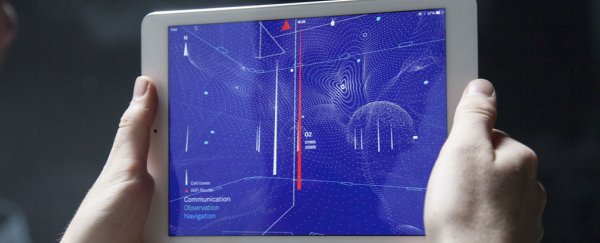It's easy to forget as we go about our day that we're constantly surrounded by an invisible network of communication streams transmitting data from one place to another. While an empty space might look uninhabited to human eyes, it could actually host a crowded intersection of intangible electronic signals.
That's the premise of Architecture of Radio, a data visualisation exhibit on show next month at the ZKM Centre for Art and Media in Karlsruhe, Germany. The interactive project is the work of Dutch artist Richard Vijgen, who has created an iPad app that lets users explore the 'infosphere' – a fluid term used to describe an environment, much like a biosphere, that's been populated by informational entities rather than biological organisms.
Vijgen's interest in the concept is tied to the signals that support the system, both wired and wireless. As he says on his website, "We are completely surrounded by an invisible system of data cables and radio signals from access points, cell towers and overhead satellites. Our digital lives depend on these very physical systems for communication, observation and navigation."
What the app does is function as a kind of augmented reality viewer to let us see this world. However, unlike most augmented reality apps, the camera is totally inert, replaced entirely by a 3D depiction of surrounding electronic signals.
As Vijgen puts it, the app "visualises this network of networks by reversing the ambient nature of the infosphere; hiding the visible while revealing the invisible technological landscape we interact with through our devices."
It's not just an imaginary, artistic representation of this digital world either. Architecture of Radio uses GPS to provide a real-time, location-based visualisation of actual signals in the immediate vicinity, including those from cell towers, Wi-Fi routers, and even tracking satellite-based communications overhead.
One of the reasons the app is site-specific, at least during its exhibition period, is it also incorporates representations of wired infrastructure embedded in the exhibition space.
There's also a public release expected later in the year, but until then you can get an idea of what it looks like in the video below: a pulsing, glitchy convergence of signals and transmissions. Yep, folks, that right there is how the cat videos get delivered to your PC.
So now we know what Wi-Fi looks like. But what about what it sounds like?
